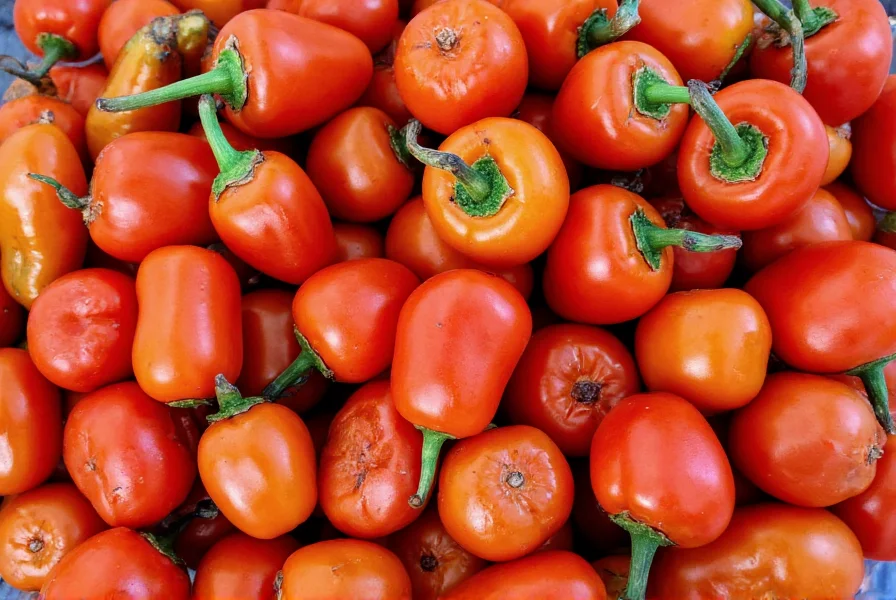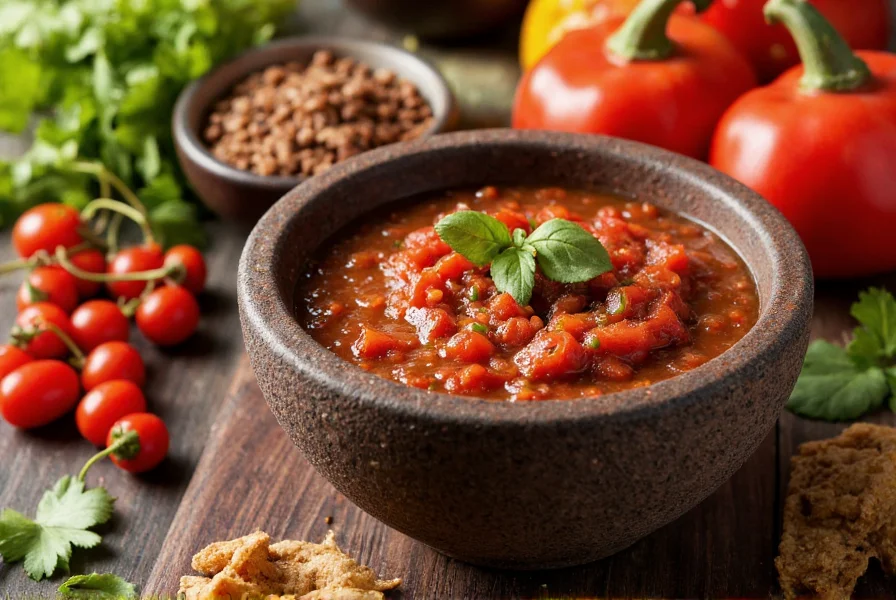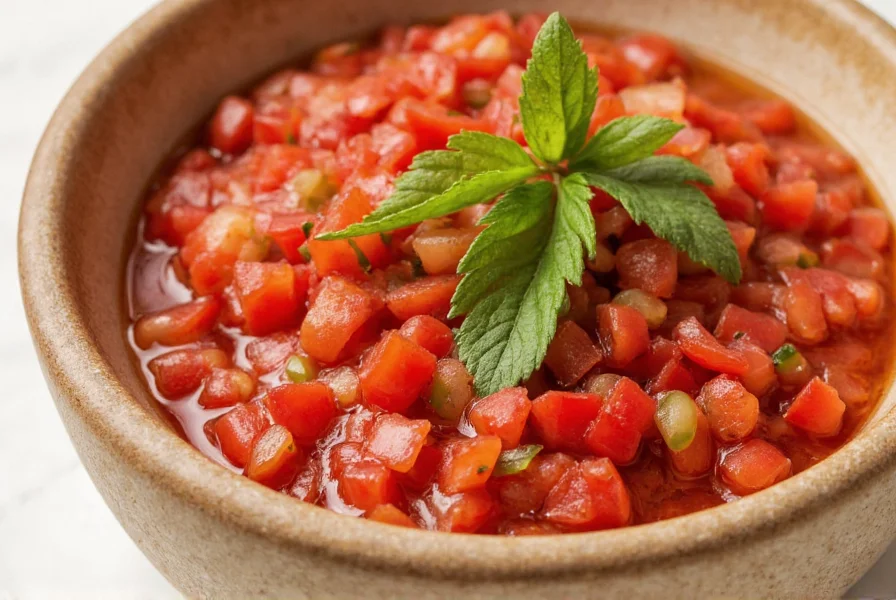
Understanding Desert Pepper Salsa: More Than Just Heat
Many confuse “desert” with “dessert,” but desert pepper salsa celebrates the native peppers growing in arid landscapes. Unlike standard tomato-based salsas, authentic desert pepper salsa showcases regional varieties that have adapted to survive extreme temperatures and limited water. These peppers develop complex flavor profiles with notes of smoke, earth, and fruitiness that distinguish them from commercially grown varieties.
The term “desert pepper” specifically references species like chiltepin (Capsicum annuum var. glabriusculum), often called “bird’s eye pepper,” which grows wild in the Sonoran Desert. These small but potent peppers rate between 50,000-100,000 Scoville units—significantly hotter than jalapeños but with nuanced flavor beyond mere heat.
Key Peppers in Authentic Desert Salsas
Understanding regional pepper varieties helps recreate authentic desert pepper salsa. The following table compares common desert region peppers:
| Pepper Variety | Heat Level (Scoville) | Flavor Profile | Best Used For |
|---|---|---|---|
| Chiltepin | 50,000-100,000 | Smoky, citrusy, earthy | Traditional salsas, finishing oil |
| Guajillo | 2,500-5,000 | Berry-like, tea notes, mild tang | Cooked salsas, marinades |
| New Mexico Chile | 1,000-2,000 | Earthy, slightly sweet, raisin notes | Roasted salsas, stews |
| Chimayo | 4,000-6,000 | Nutty, complex, moderate heat | Fresh salsas, grilling |
Traditional Preparation Techniques
Authentic desert pepper salsa preparation follows methods perfected over generations in Southwest communities. Unlike quick blender salsas, traditional preparation involves:
- Dry roasting peppers over open flame or comal to develop smoky notes without added liquid
- Stone grinding using molcajete (lava stone mortar) for optimal texture and flavor release
- Controlled fermentation of some varieties to enhance complexity
- Ingredient sequencing where peppers are processed before tomatoes to preserve volatile oils
These techniques maximize the unique characteristics of desert-grown peppers while maintaining the salsa’s traditional texture—chunky yet cohesive, never watery.
Classic Desert Pepper Salsa Recipe
This authentic southwest desert pepper salsa recipe serves 6 and requires 20 minutes preparation plus cooling time:
Ingredients
- 8-10 dried guajillo peppers (stemmed and seeded)
- 4 fresh chiltepin peppers (adjust for heat preference)
- 3 medium vine-ripened tomatoes
- 1/2 white onion, roughly chopped
- 2 garlic cloves, peeled
- 1/4 cup fresh cilantro leaves
- 1/2 teaspoon Mexican oregano
- 1/2 teaspoon sea salt
- 2 tablespoons fresh lime juice
Preparation
- Dry roast guajillo peppers in comal over medium heat 30-60 seconds per side until fragrant but not burnt
- Soak roasted peppers in hot water for 15 minutes until softened
- Char tomatoes, garlic, and chiltepin peppers directly over gas flame or under broiler
- Transfer all ingredients except cilantro, oregano, salt and lime to molcajete
- Grind ingredients to desired consistency using circular motions
- Mix in remaining ingredients and let rest 30 minutes before serving
This southwest desert pepper salsa recipe yields a complex condiment with moderate heat that intensifies slightly when stored. For best results, prepare 24 hours before serving to allow flavors to meld. Store in airtight container in refrigerator for up to 10 days.

Serving Traditions and Modern Pairings
Traditional desert pepper salsa serves as both condiment and cooking ingredient in Southwestern cuisine. Understanding proper pairings enhances your experience:
- With proteins: Complements grilled carne asada, roasted turkey, or wild game without overpowering
- With starches: Perfect with blue corn tortillas, roasted sweet potatoes, or heirloom beans
- With vegetables: Elevates grilled nopales (cactus paddles) or roasted squash
- As cooking base: Forms flavorful foundation for stews and braises
Modern culinary applications include using desert pepper salsa as:
- Bruschetta topping with queso fresco
- Marinade component for citrus-glazed fish
- Flavor boost in Bloody Mary cocktails
- Accompaniment to artisanal cheeses
Cultural Significance of Desert Peppers
Desert pepper varieties hold deep cultural importance in Southwestern communities. Indigenous groups like the Tohono O’odham have cultivated chiltepin peppers for over 9,000 years, considering them sacred plants that connect people to the land. These peppers grow wild without cultivation, often dispersed by birds that eat the fruits and spread seeds through their droppings—hence the name “bird’s eye pepper.”
Traditional harvesting involves careful collection during peak season (late summer to early fall), with communities often sharing harvest locations passed down through generations. This sustainable approach ensures pepper populations remain healthy while honoring the desert ecosystem that sustains them.
Frequently Asked Questions
What’s the difference between desert pepper salsa and regular salsa?
Desert pepper salsa specifically uses peppers native to arid regions like chiltepin, guajillo, and New Mexico varieties, which develop unique flavor compounds due to growing in harsh desert conditions. Regular salsas often use commercially cultivated jalapeños or serranos that lack the complex smoky, earthy notes characteristic of authentic desert pepper salsas.
Can I substitute regular peppers for desert peppers in this salsa?
While you can substitute, the flavor profile changes significantly. For closest approximation, use a combination of smoked paprika (1/4 tsp) with serrano peppers for chiltepin, and ancho peppers for guajillo. However, true desert pepper characteristics come from the specific terroir of arid regions, which cannot be fully replicated with non-native peppers.
How long does homemade desert pepper salsa last?
Properly stored in an airtight container in the refrigerator, authentic desert pepper salsa maintains peak quality for 7-10 days. The natural acidity from tomatoes and lime juice preserves it, but flavor complexity begins diminishing after day 3. Never freeze traditional desert pepper salsa as it alters the delicate texture and flavor balance developed through stone grinding.
Why are desert peppers hotter than regular peppers?
Desert peppers develop higher capsaicin levels as a survival mechanism—the compound that creates heat deters predators while attracting bird pollinators. Growing in nutrient-poor, water-stressed conditions concentrates flavor compounds, including capsaicin. However, authentic desert pepper salsa balances this heat with complementary ingredients to create complex flavor rather than pure spiciness.











 浙公网安备
33010002000092号
浙公网安备
33010002000092号 浙B2-20120091-4
浙B2-20120091-4